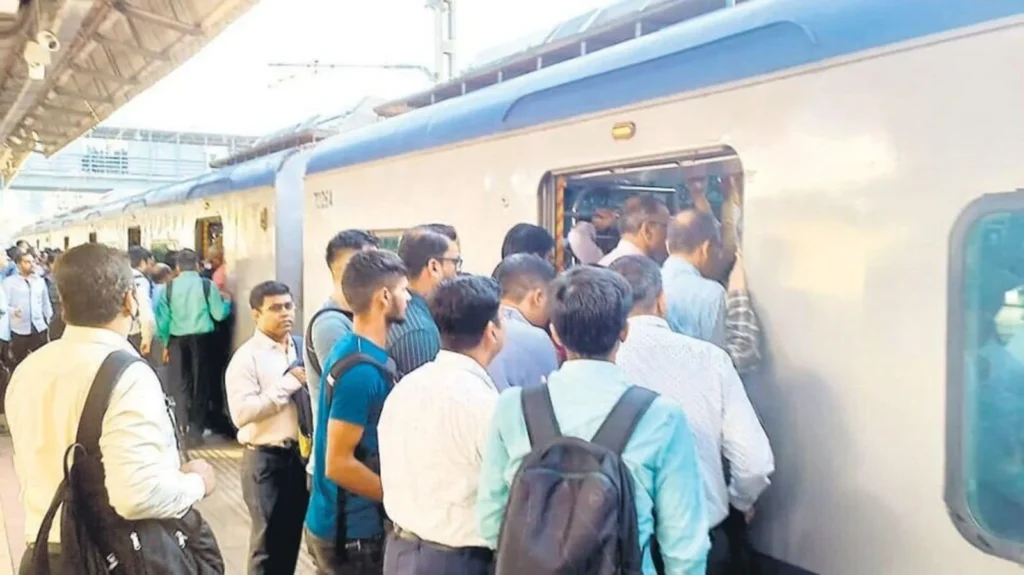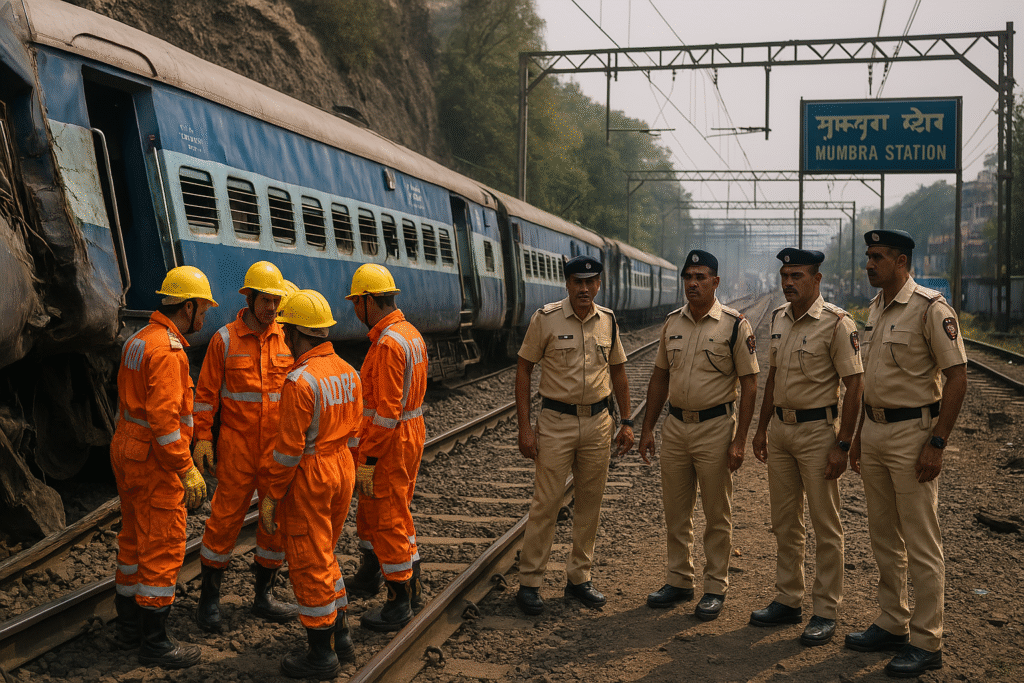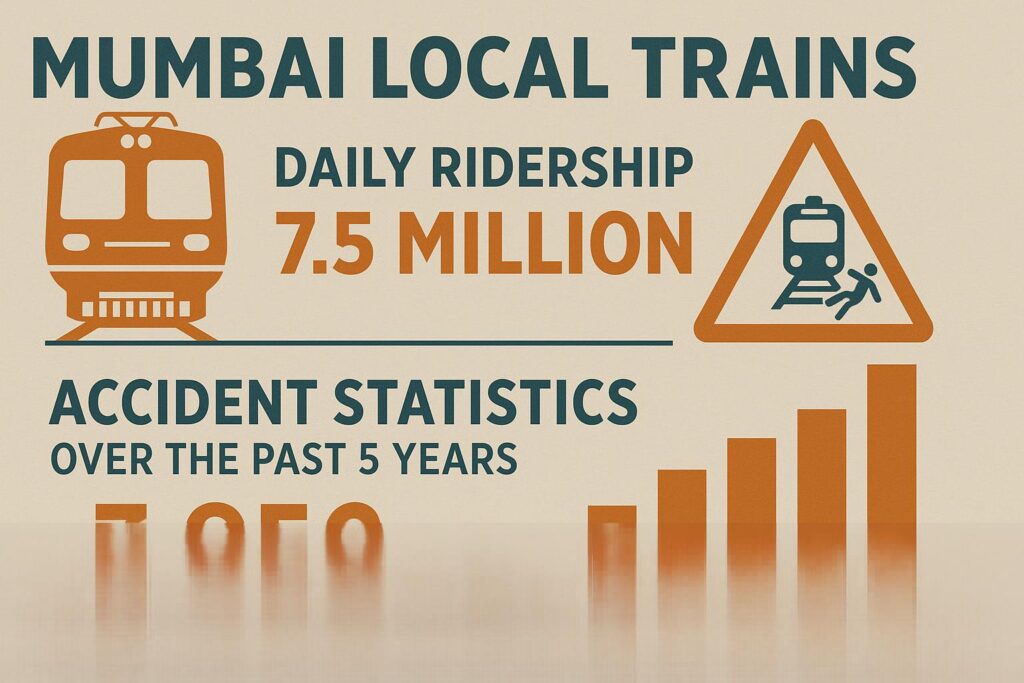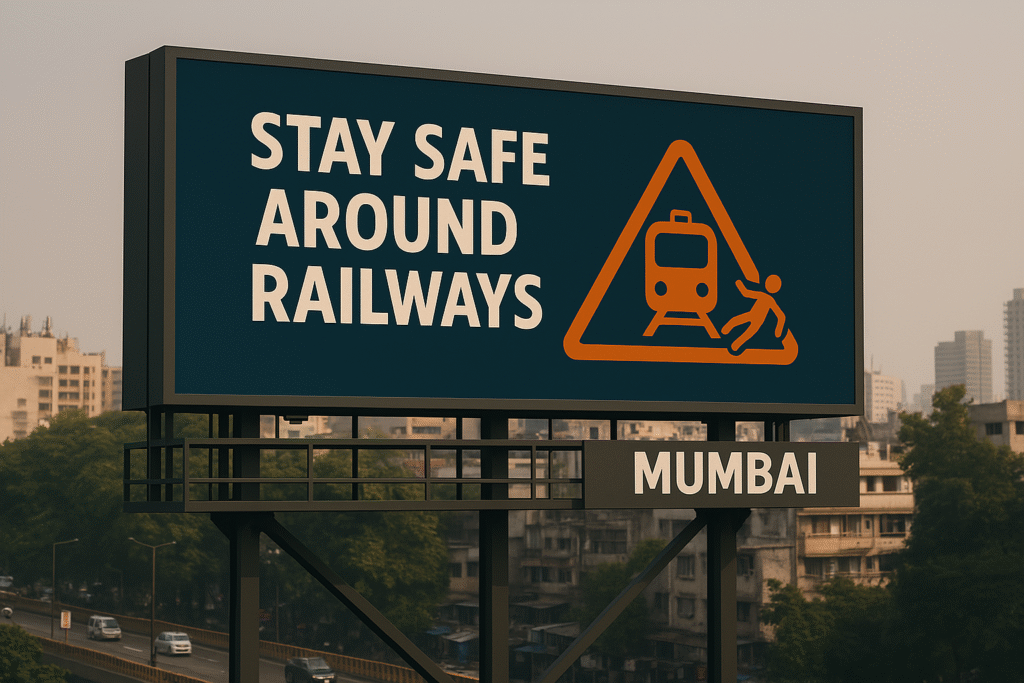Tragedy in Mumbai: 5 dead in local train accident near Mumbra. Explore causes, reactions, and urgent safety reforms in India’s busiest rail network.
Mumbai Local Train Accident: A Wake-Up Call for Urban Rail Safety
Date of Incident: June 9, 2025
Location: Between Mumbra and Diva Stations, Thane District, Mumbai
Casualties: 5 Dead, 9 Injured

What Happened?
In a tragic turn of events on the morning of June 9, 2025, five commuters lost their lives and nine others were injured after falling from overcrowded local trains between Mumbra and Diva stations in Mumbai. The incident occurred during peak rush hour when two trains passed each other on a curve, and passengers hanging on the footboards collided.
According to Central Railway officials, the victims were traveling on the footboards due to extreme overcrowding. Their backpacks and bodies brushed against each other as the trains passed in opposite directions, causing several to lose balance and fall onto the tracks.

The Anatomy of Overcrowding: A Daily Struggle
Mumbai’s local trains are the lifeline of the city, ferrying over 7.5 million passengers daily. But this lifeline is stretched thin. Overcrowding is not just a discomfort—it’s a daily hazard. Commuters often cling to the doors, stand on footboards, or squeeze into compartments beyond capacity.
This tragedy is not an isolated event. It’s a symptom of a system under immense pressure

Voices from the Ground
Eyewitnesses described the scene as horrifying. “I saw people falling like dominoes,” said a commuter who was on the adjacent train. “There was screaming, and then silence.”
One of the injured, now recovering at Kalwa Hospital, shared, “We were just trying to get to work. We didn’t know it would be a matter of life and death.”
Medical Response and Government Action
Emergency services rushed to the scene. Victims were taken to Jupiter Hospital and Kalwa Hospital, where four were declared dead on arrival. One remains in critical condition.
Maharashtra Chief Minister Devendra Fadnavis announced a compensation of ₹5 lakh for the families of the deceased and ₹50,000–₹2 lakh for the injured. He also ordered a high-level probe into the incident.
What’s Being Done: Promises vs. Progress
The Railway Board has announced that all new and existing local train rakes will be equipped with automatic door closure systems to prevent such tragedies. While this is a step forward, critics argue that implementation has been slow and inconsistent.
Urban planning experts have long warned about the mismatch between Mumbai’s population growth and its transport infrastructure. The city’s rail system, designed decades ago, is buckling under modern demands.
Related Reading (External Links)
- Indian Railways’ modernization plans
- World Bank report on urban transport in India
- UN Habitat: Sustainable urban mobility
The Bigger Picture: Safety vs. Speed
India’s railways are often caught in a tug-of-war between speed, affordability, and safety. While local trains are the most economical mode of transport, they are also the most dangerous when overcrowded.
According to a 2024 report by the National Crime Records Bureau, over 2,000 deaths were recorded on Mumbai’s suburban rail network due to falls, electrocution, and track crossing.
Expert Opinions
Transportation analyst Dr. Ramesh Kulkarni says, “This is not just a railway issue—it’s a city planning issue. Until we decentralize jobs and improve last-mile connectivity, people will continue to risk their lives daily.”
Public Outrage and Political Reactions
The tragedy has sparked widespread outrage. Congress leader Rahul Gandhi criticized the central government, calling the incident “a reflection of systemic neglect.” Shiv Sena’s Aaditya Thackeray demanded immediate reforms and accountability.
Social media erupted with hashtags like #MumbaiTrainTragedy and #RailwayReformNow, with citizens sharing their own harrowing experiences on local trains.
What Needs to Change?
- Infrastructure Upgrade: Faster implementation of automatic doors and modern rakes.
- Increased Frequency: More trains during peak hours to reduce crowding.
- Awareness Campaigns: Educating commuters on safe travel practices.
- Urban Decentralization: Reducing pressure on Mumbai by developing satellite towns.

In Memory of the Victims
Let us not allow this tragedy to fade into statistics. Behind every number is a life lost, a family shattered, and a city that must do better.
Final Thoughts
The Mumbai local train accident is a grim reminder of the urgent need for systemic change. As India strides toward becoming a global economic powerhouse, it must ensure that its citizens can commute safely and with dignity.
